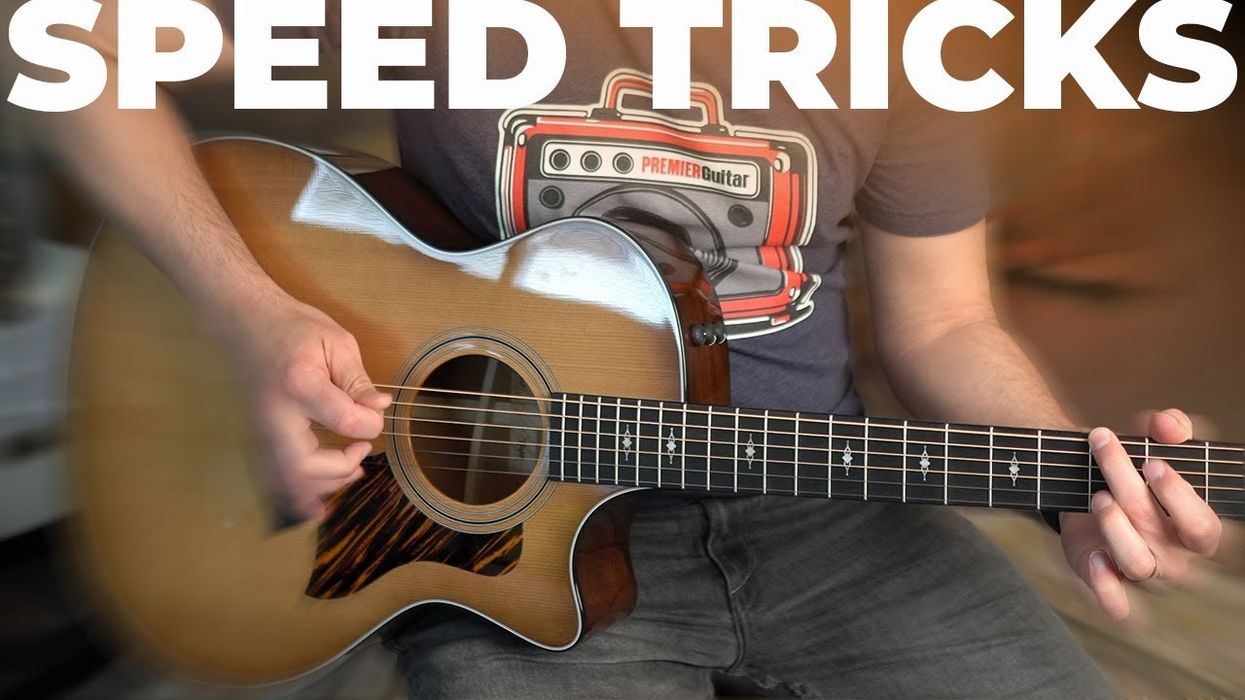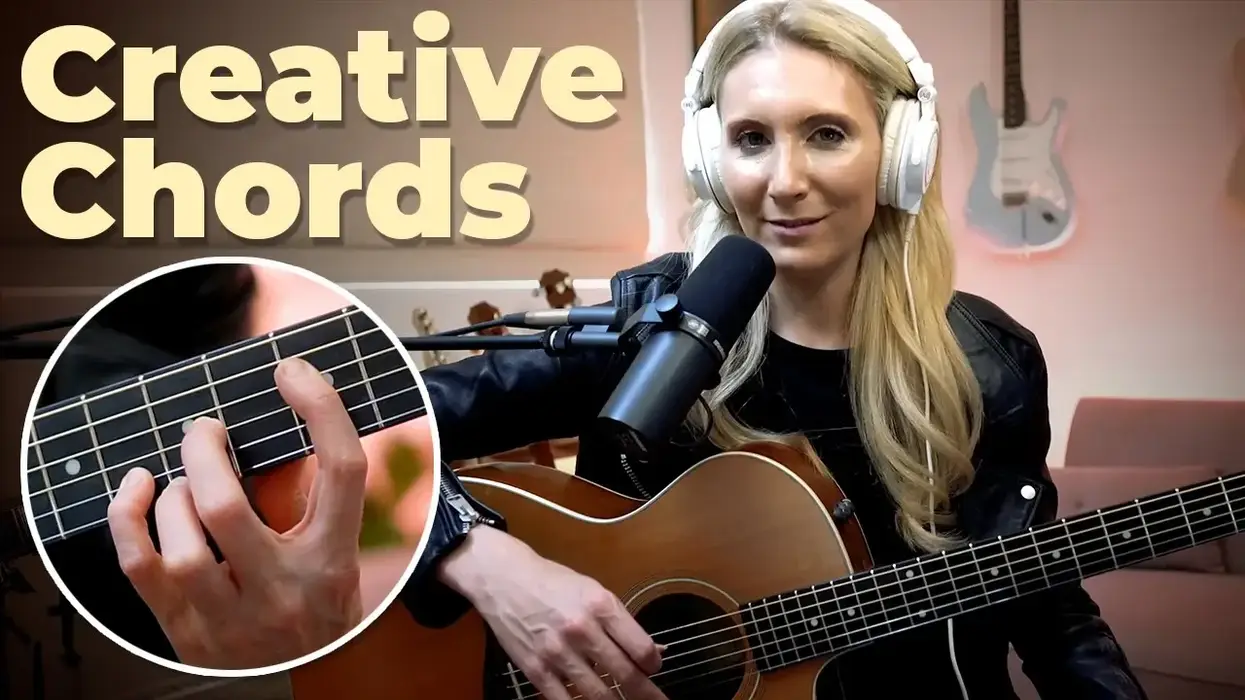Open-string notes are arguably the most magical sounding notes available on the guitar. However, there are times when those are precisely the notes we don’t want to hear. We might only want to hear the strings directly beneath our fingers. That’s where muting comes in. It’s equal parts sleight-of-hand magic and surgical precision, but mostly it’s just the result of a clever approach to technique.
What is Palm Muting?
The most common style of muting is palm muting, where you place the side of your palm against the string close to the bridge to achieve a more chunky, percussive sound. One of the absolute masters of palm muting is Metallica’s James Hetfield. In this video below, check out how tight he is with the muting.
The fretting hand has some muting responsibilities as well. It’s in charge of keeping things clean on the fretboard and allow the picking hand to make larger motions if necessary. That will be our focus here. I want to show you how to keep your strumming hand moving while preventing any unnecessary noises—or pollution.
The funkiest rhythm players—Prince, Stevie Ray Vaughan, Nile Rodgers, Al McKay, Jimmy Nolan, Cory Wong—know all about this. Jazzers like Wes Montgomery and George Benson use fretting-hand muting extensively in their brilliant octave work as well.
The basics of the technique amount to laying the portions of your fingers that you’re not using across the remaining strings in order to keep them quiet. Not silent. Just quieter. You’ll hear a percussive attack across the string in addition to the notes that are being played.
Ex. 1 is a deceptively tricky technique that looks and sounds way easier than it really is. Even when you’re playing single notes, all the strings are being strummed the entire time. Take a listen.
Ex. 2 consists of our utilitarian A minor blues (A–C–D–Eb–E–G) scale. While this will be played one note at a time, we’re strumming all the strings so that we hear the intended note as well as a strong percussive sound alongside it. This makes for a big tone and, by constantly strumming alternating up and down strokes, it allows you to stay firmly in the rhythmic pocket. It’s almost like organic quantizing: You can’t play out of time because the strumming hand always chugs along in time with the basic groove, be it an eighth-note shuffle, a 16th-note funk—whatever. First, let’s hear the scale being picked one string at a time.
Ex. 3 features the blues scale with each note played as consecutive 16th-notes using alternate strumming. This is the most basic form of this technique. Practice this ascending as well as descending through the scale. Focusing on one pair or even a single string can be helpful in clean execution.
The purpose behind using this method of muting is to make your notes have more authority: Own what you play. It also allows your playing, whether melodic or rhythmic, to sit in a serious pocket. The same groove that you infuse in your best chordal rhythm playing is injected into single-note or octave playing too.
Ex. 4 features the lead part playing octaves on the 5th and 3rd strings. How many times have you heard this? Think: Smashing Pumpkins, Green Day, Foo Fighters—it’s a long list.
Another classic use of this technique can be found in the Michael Jackson hit “Billie Jean.” The driving octaves playing the 5 of the chord make for an effective part where the song goes to the IVm chord (Ex. 5). Once you get the hang of using this muting technique, your drummer friends will see you as much more of a rhythmic ally.
The quarter-note comping over a Bb blues in Ex. 6 features most of the strings being muted via the fretting hand while the strumming hand focuses on laying down a strong backbeat rhythm. You can use not only your fretting-hand’s fingers but also your thumb over the top to mute the 6th string. Remember to lean into beats 2 and 4. This works with an overdriven blues tone or on steel-string acoustic when going for more of a hot club jazz manouche vibe.
Hopefully you’re grasping the many uses and contexts in which this valuable, yet surprisingly under-utilized, technique can be employed. It takes practice to get it right but it pays you back in major dividends. Other players will be looking at your amp and pedalboard to see how you get such an amazing tone—but it’s your fingers, as usual, that hold the secret.







![Rig Rundown: AFI [2025]](https://www.premierguitar.com/media-library/youtube.jpg?id=62064741&width=1245&height=700&quality=70&coordinates=0%2C0%2C0%2C0)


![Devon Eisenbarger [Katy Perry] Rig Rundown](https://www.premierguitar.com/media-library/youtube.jpg?id=61774583&width=1245&height=700&quality=70&coordinates=0%2C0%2C0%2C0)










